Discover 35 hidden attractions, cool sights, and unusual things to do in Rome (Italy). Don't miss out on these must-see attractions: Colosseum, St. Peter's Basilica, and Archbasilica of Saint John Lateran. Also, be sure to include San Paolo in your itinerary.
Below, you can find the list of the most amazing places you should visit in Rome (Lazio).
Table of Contents
Colosseum
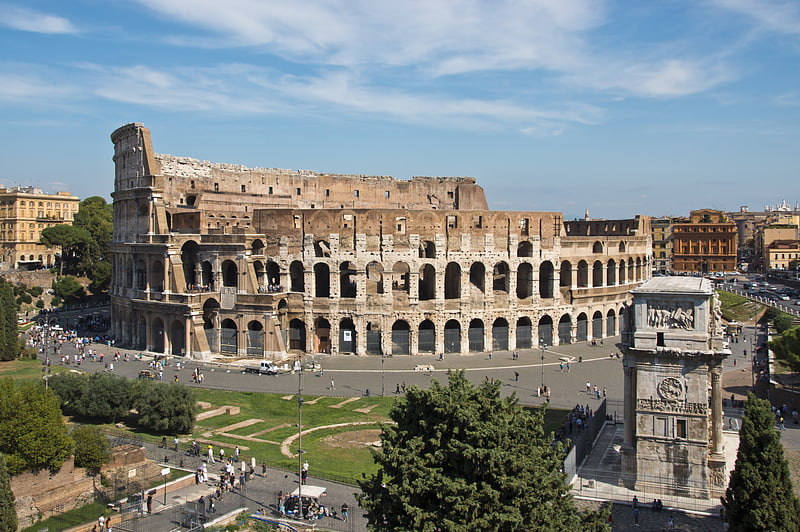
Also known as: Colosseo
Iconic ancient Roman gladiatorial arena. The Colosseum is an oval amphitheatre in the centre of the city of Rome, Italy, just east of the Roman Forum. It is the largest ancient amphitheatre ever built, and is still the largest standing amphitheatre in the world today, despite its age. Construction began under the emperor Vespasian in 72 and was completed in 80 AD under his successor and heir, Titus. Further modifications were made during the reign of Domitian. The three emperors that were patrons of the work are known as the Flavian dynasty, and the amphitheatre was named the Flavian Amphitheatre by later classicists and archaeologists for its association with their family name.
The Colosseum is built of travertine limestone, tuff (volcanic rock), and brick-faced concrete. It could hold an estimated 50,000 to 80,000 spectators at various points in its history, having an average audience of some 65,000; it was used for gladiatorial contests and public spectacles including animal hunts, executions, re-enactments of famous battles, and dramas based on Roman mythology, and briefly mock sea battles. The building ceased to be used for entertainment in the early medieval era. It was later reused for such purposes as housing, workshops, quarters for a religious order, a fortress, a quarry, and a Christian shrine.
Although substantially ruined because of earthquakes and stone-robbers (for spolia), the Colosseum is still an iconic symbol of Imperial Rome and was listed as one of the New7Wonders of the World. It is one of Rome's most popular tourist attractions and also has links to the Roman Catholic Church, as each Good Friday the Pope leads a torchlit "Way of the Cross" procession that starts in the area around the Colosseum. The Colosseum is depicted on the Italian version of the five-cent euro coin.[1]
Address: Piazza del Colosseo, 00184 Rome
St. Peter's Basilica
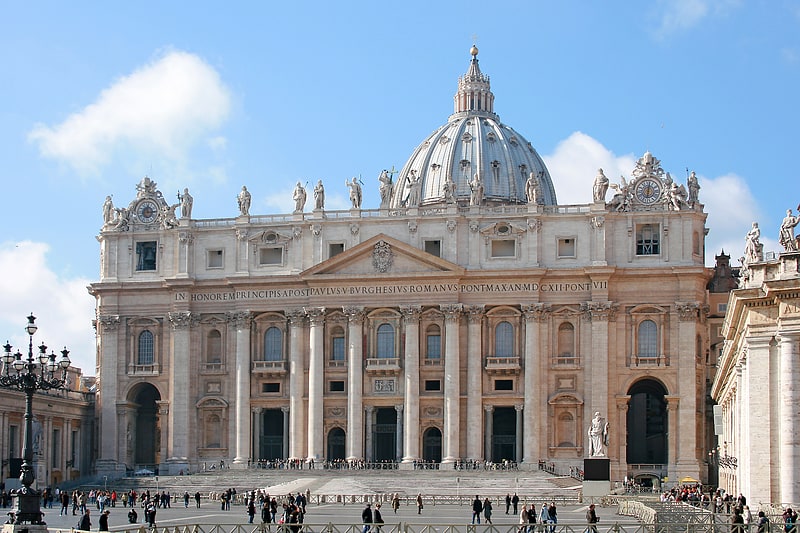
Also known as: Basilica di San Pietro in Vaticano
World’s largest basilica of Christianity. The Papal Basilica of Saint Peter in the Vatican, or simply Saint Peter's Basilica, is a church built in the Renaissance style located in Vatican City, the papal enclave that is within the city of Rome, Italy. It was initially planned by Pope Nicholas V and then Pope Julius II to replace the aging Old St. Peter's Basilica, which was built in the fourth century by Roman emperor Constantine the Great. Construction of the present basilica began on 18 April 1506 and was completed on 18 November 1626.
Designed principally by Donato Bramante, Michelangelo, Carlo Maderno and Gian Lorenzo Bernini, St. Peter's is the most renowned work of Renaissance architecture and the largest church in the world by interior measure. While it is neither the mother church of the Catholic Church nor the cathedral of the Diocese of Rome (these equivalent titles being held by the Archbasilica of Saint John Lateran in Rome), St. Peter's is regarded as one of the holiest Catholic shrines. It has been described as "holding a unique position in the Christian world" and as "the greatest of all churches of Christendom."
Catholic tradition holds that the basilica is the burial site of Saint Peter, chief among Jesus's apostles and also the first Bishop of Rome (Pope). Saint Peter's tomb is supposedly directly below the high altar of the basilica, also known as the Altar of the Confession. For this reason, many popes have been interred at St. Peter's since the Early Christian period.
St. Peter's is famous as a place of pilgrimage and for its liturgical functions. The pope presides at a number of liturgies throughout the year both within the basilica or the adjoining St. Peter's Square; these liturgies draw audiences numbering from 15,000 to over 80,000 people. St. Peter's has many historical associations, with the Early Christian Church, the Papacy, the Protestant Reformation and Catholic Counter-reformation and numerous artists, especially Michelangelo. As a work of architecture, it is regarded as the greatest building of its age. St. Peter's is one of the four churches in the world that hold the rank of Major papal basilica, all four of which are in Rome, and is also one of the Seven Pilgrim Churches of Rome. Contrary to popular misconception, it is not a cathedral because it is not the seat of a bishop; the cathedra of the pope as Bishop of Rome is at Saint John Lateran.[2]
Address: Piazza San Pietro, 00120 Città del Vaticano
Archbasilica of Saint John Lateran
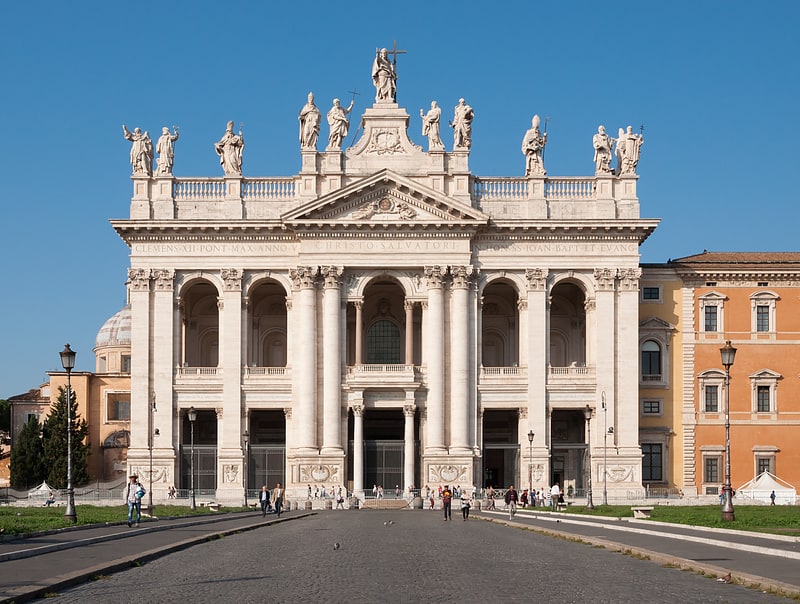
Also known as: Basilica di San Giovanni in Laterano
Cathedral in Rome, Italy. The Cathedral of the Most Holy Savior and of Saints John the Baptist and John the Evangelist in the Lateran, also known as the Papal Archbasilica of Saint John Lateran, Saint John Lateran, or the Lateran Basilica, is the cathedral church of the Diocese of Rome in the city of Rome, and serves as the seat of the bishop of Rome, the pope. The archbasilica lies outside of Vatican City proper, which is located approximately 4 kilometres to the northwest. Nevertheless, as properties of the Holy See, the archbasilica and its adjoining edifices enjoy an extraterritorial status from Italy, pursuant to the terms of the Lateran Treaty of 1929.
The church is the oldest and highest ranking of the four major papal basilicas as well as one of the Seven Pilgrim Churches of Rome, holding the unique title of "archbasilica". Originally founded in 324, it is the oldest public church in the city of Rome, and the oldest basilica of the Western world. It houses the cathedra of the Roman bishop, and has the title of ecumenical mother church of the Roman Catholic faithful. The building deteriorated during the Middle Ages and was badly damaged by two fires in the 14th century. It was rebuilt in the late 16th century during the reign of Pope Sixtus V. The new structure's interior was renovated in the late 17th century, and its façade was completed in 1735 under Pope Clement XII.
The current rector is Cardinal Archpriest Angelo De Donatis, Vicar General for the Diocese of Rome. The President of the French Republic, currently Emmanuel Macron, is ex officio the "First and Only Honorary Canon" of the archbasilica, a title that the heads of state of France have possessed since King Henry IV.
The large Latin inscription on the façade reads: Clemens XII Pont Max Anno V Christo Salvatori In Hon SS Ioan Bapt et Evang. This abbreviated inscription translates as: "Pope Clement XII, in the fifth year to Christ the Savior, in honor of Saints John the Baptist and the Evangelist". The inscription indicates, with its full title (see below), that the archbasilica was originally dedicated to Christ the Savior and, centuries later, co-dedicated to Saint John the Baptist and Saint John the Evangelist. Christ the Savior remains its primary dedication, and its titular feast day is 6 August, the Transfiguration of Christ. As the Cathedral of the Pope as Bishop of Rome, it ranks superior to all other churches of the Roman Catholic Church, including Saint Peter's Basilica.[3]
Address: Piazza di S. Giovanni in Laterano, 4, 00184 Roma
San Paolo
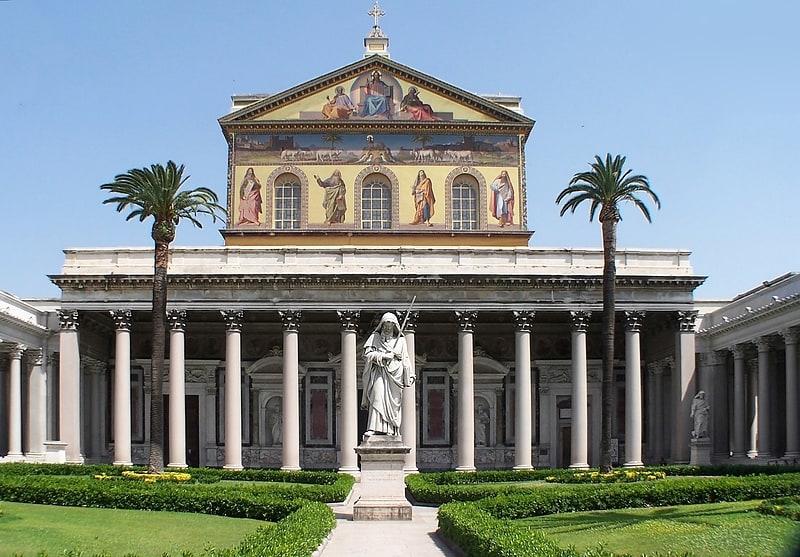
Elegant papal basilica and St Paul's tomb. The Papal Basilica of Saint Paul Outside the Walls, commonly known as Saint Paul's Outside the Walls, is one of Rome's four major papal basilicas, along with the basilicas of Saint John in the Lateran, Saint Peter's, and Saint Mary Major, as well as one of the Seven Pilgrim Churches of Rome.
The Basilica is within Italian territory, but the Holy See owns the Basilica in a regime of extraterritoriality, with Italy recognizing its full ownership and conceding it "the immunity granted by international law to the headquarters of the diplomatic agents of foreign States".
James Michael Harvey was named Archpriest of the basilica in 2012.[4]
Address: Piazzale San Paolo, 1, 00146 Roma
Santa Maria Maggiore
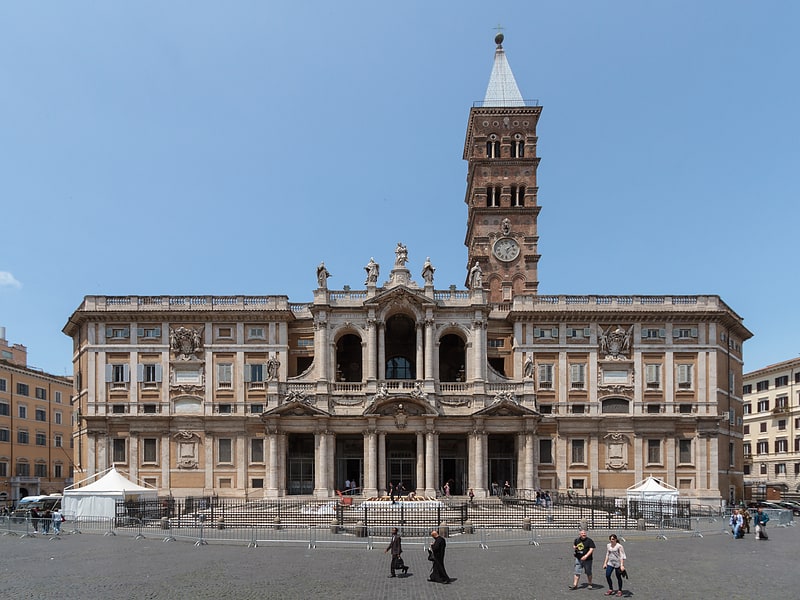
5th-century church with a gilded ceiling. The Basilica of Saint Mary Major, or church of Santa Maria Maggiore, is a Major papal basilica as well as one of the Seven Pilgrim Churches of Rome and the largest Catholic Marian church in Rome, Italy.
The basilica enshrines the venerated image of Salus Populi Romani, depicting the Blessed Virgin Mary as the health and protectress of the Roman people, which was granted a Canonical coronation by Pope Gregory XVI on 15 August 1838 accompanied by his Papal bull Cælestis Regina.
Pursuant to the Lateran Treaty of 1929 between the Holy See and Italy, the Basilica is within Italian territory and not the territory of the Vatican City State. However, the Holy See fully owns the Basilica, and Italy is legally obligated to recognize its full ownership thereof and to concede to it "the immunity granted by International Law to the headquarters of the diplomatic agents of foreign States." In other words, the complex of buildings has a status somewhat similar to a foreign embassy.[5]
Address: Piazza di Santa Maria Maggiore 42, 00185 Rome
St. Peter's Square

Also known as: Piazza San Pietro
Tourist attraction in Vatican City. Saint Peter's Square is a large plaza located directly in front of St. Peter's Basilica in Vatican City, the papal enclave inside Rome, directly west of the neighborhood of Borgo. Both the square and the basilica are named after Saint Peter, an apostle of Jesus considered by Catholics to be the first Pope.
At the centre of the square is an ancient Egyptian obelisk, erected at the current site in 1586. Gian Lorenzo Bernini designed the square almost 100 years later, including the massive Doric colonnades, four columns deep, which embrace visitors in "the maternal arms of Mother Church". A granite fountain constructed by Bernini in 1675 matches another fountain designed by Carlo Maderno in 1613.[6]
Vatican Museums

Also known as: Musei Vaticani
Museum in Vatican City. The Vatican Museums are the public museums of the Vatican City. They display works from the immense collection amassed by the Catholic Church and the papacy throughout the centuries, including several of the most renowned Roman sculptures and most important masterpieces of Renaissance art in the world. The museums contain roughly 70,000 works, of which 20,000 are on display, and currently employ 640 people who work in 40 different administrative, scholarly, and restoration departments.
Pope Julius II founded the museums in the early 16th century. The Sistine Chapel, with its ceiling and altar wall decorated by Michelangelo, and the Stanze di Raffaello (decorated by Raphael) are on the visitor route through the Vatican Museums.
In 2020, due to the COVID-19 pandemic, the Vatican Museums were visited by only 1,300,000 persons, a drop of 81 percent from the number of visitors in 2019, but still enough to rank the museums fourth among the most-visited art museums in the world.
There are 24 galleries, or sale, in total, with the Sistine Chapel, notably, being the last sala within the Museum.[7]
Address: Viale Vaticano, 00165 Roma
Roman Forum
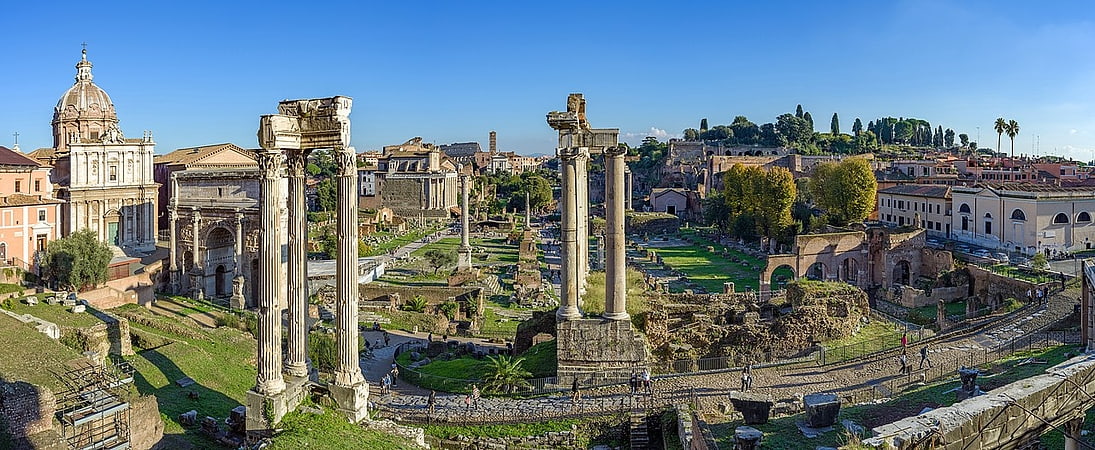
Also known as: Foro Romano
Excavated heart of the Roman Empire. The Roman Forum, also known by its Latin name Forum Romanum, is a rectangular forum surrounded by the ruins of several important ancient government buildings at the center of the city of Rome. Citizens of the ancient city referred to this space, originally a marketplace, as the Forum Magnum, or simply the Forum.
For centuries the Forum was the center of day-to-day life in Rome: the site of triumphal processions and elections; the venue for public speeches, criminal trials, and gladiatorial matches; and the nucleus of commercial affairs. Here statues and monuments commemorated the city's great men. The teeming heart of ancient Rome, it has been called the most celebrated meeting place in the world, and in all history. Located in the small valley between the Palatine and Capitoline Hills, the Forum today is a sprawling ruin of architectural fragments and intermittent archaeological excavations attracting 4.5 million or more sightseers yearly.
Many of the oldest and most important structures of the ancient city were located on or near the Forum. The Roman Kingdom's earliest shrines and temples were located on the southeastern edge. These included the ancient former royal residence, the Regia (8th century BC), and the Temple of Vesta (7th century BC), as well as the surrounding complex of the Vestal Virgins, all of which were rebuilt after the rise of imperial Rome.
Other archaic shrines to the northwest, such as the Umbilicus Urbis and the Vulcanal (Shrine of Vulcan), developed into the Republic's formal Comitium (assembly area). This is where the Senate—as well as Republican government itself—began. The Senate House, government offices, tribunals, temples, memorials and statues gradually cluttered the area.
Over time the archaic Comitium was replaced by the larger adjacent Forum and the focus of judicial activity moved to the new Basilica Aemilia (179 BC). Some 130 years later, Julius Caesar built the Basilica Julia, along with the new Curia Julia, refocusing both the judicial offices and the Senate itself. This new Forum, in what proved to be its final form, then served as a revitalized city square where the people of Rome could gather for commercial, political, judicial and religious pursuits in ever greater numbers.
Eventually much economic and judicial business would transfer away from the Forum Romanum to the larger and more extravagant structures (Trajan's Forum and the Basilica Ulpia) to the north. The reign of Constantine the Great saw the construction of the last major expansion of the Forum complex—the Basilica of Maxentius (312 AD). This returned the political center to the Forum until the fall of the Western Roman Empire almost two centuries later.[8]
Address: Via della Salara Vecchia, 5/6, 00186 Roma
Pantheon
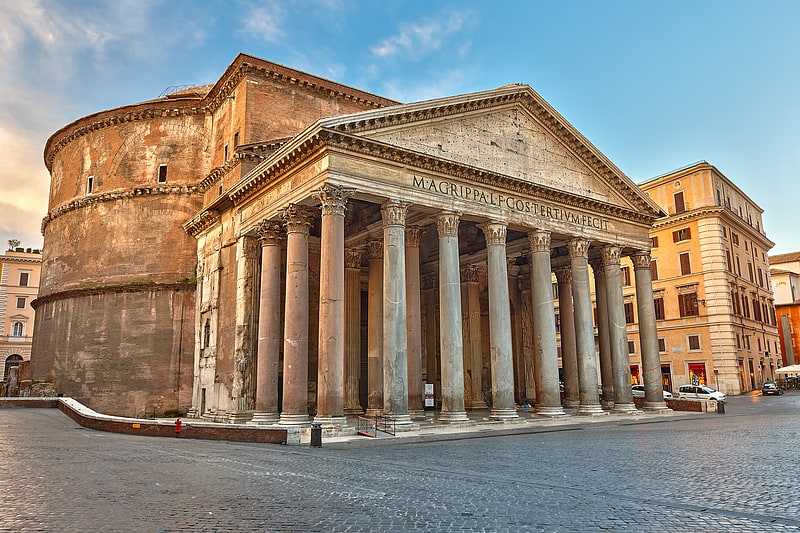
Landmark Roman church with historic tombs. The Pantheon is a former Roman temple and since 609 AD, a Catholic church, in Rome, Italy, on the site of an earlier temple commissioned by Marcus Agrippa during the reign of Augustus. It was rebuilt by the emperor Hadrian and probably dedicated c. 126 AD. Its date of construction is uncertain, because Hadrian chose not to inscribe the new temple but rather to retain the inscription of Agrippa's older temple, which had burned down.
The building is cylindrical with a portico of large granite Corinthian columns (eight in the first rank and two groups of four behind) under a pediment. A rectangular vestibule links the porch to the rotunda, which is under a coffered concrete dome, with a central opening (oculus) to the sky. Almost two thousand years after it was built, the Pantheon's dome is still the world's largest unreinforced concrete dome. The height to the oculus and the diameter of the interior circle are the same, 43 metres (142 ft).
It is one of the best-preserved of all Ancient Roman buildings, in large part because it has been in continuous use throughout its history: since the 7th century, it has been a church dedicated to St. Mary and the Martyrs (Latin: Sancta Maria ad Martyres) but informally known as "Santa Maria Rotonda". The square in front of the Pantheon is called Piazza della Rotonda. The Pantheon is a state property, managed by Italy's Ministry of Cultural Heritage and Activities and Tourism through the Polo Museale del Lazio. In 2013, it was visited by over 6 million people.
The Pantheon's large circular domed cella, with a conventional temple portico front, was unique in Roman architecture. Nevertheless, it became a standard exemplar when classical styles were revived, and has been copied many times by later architects.[9]
Address: Piazza della Rotonda, 00186 Roma
Borgia Apartments
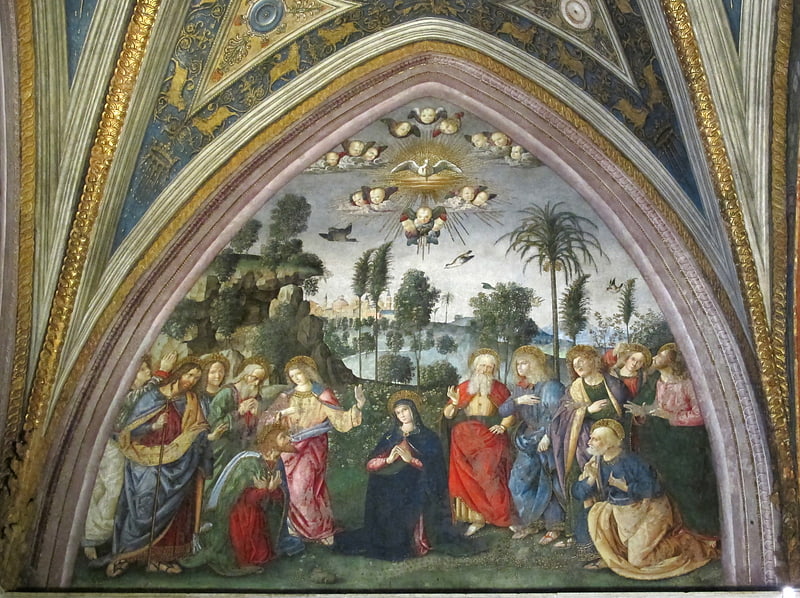
The Borgia Apartments are a suite of rooms in the Apostolic Palace in the Vatican, adapted for personal use by Pope Alexander VI. In the late 15th-century, he commissioned the Italian painter Bernardino di Betto and his studio to decorate them with frescos.
The paintings and frescoes, which were executed between 1492 and 1494, drew on a complex iconographic program that used themes from medieval encyclopedias, adding an eschatological layer of meaning and celebrating the supposedly divine origins of the Borgias. Five of the six apartments include frescoes painted in the vault. The upper register of the vaults contain paintings, while the lower registers are decorated with tapestries and gold. Recent cleaning of Pinturicchio's fresco The Resurrection has revealed a scene believed to be the earliest known European depiction of Native Americans, painted just two years after Christopher Columbus returned from the New World.
The Borgia Apartments includes six rooms: Room of the Sibyls, Room of the Creed, Room of the Liberal Arts, Room of the Saints, Room of Mysteries, and Room of Pontiffs. The Room of Sibyls and the Room of Creed include frescoes of the Old Testament prophets and sibyls. These room also pay homage to the planets. In the Room of Liberal Arts, Pinturicchio has represented the liberal arts as female figures through his frescoes in the vault. The Room of Saints consists of frescoes detailing the lives of seven notable saints, including Barbara, Catherine, Anthony, Paul, Susanna, and Elizabeth. Pinturicchio's last room, the Room of Mysteries, contains frescoes with New Testament subject matter, including the Nativity, Ascension, Adoration of the Magi, and other scenes.
The Room of the Pontiffs was erected before all the other buildings, between 1277 and 1280. Built between 1447 and 1455, the Room of the Liberal Arts, Saints, and Mysteries were referred to as "secret rooms" by Pope Alexander VI's master of ceremonies, Johannes Burchard.
As of 2019, the suite was open to tourists.[10]
Arch of Constantine
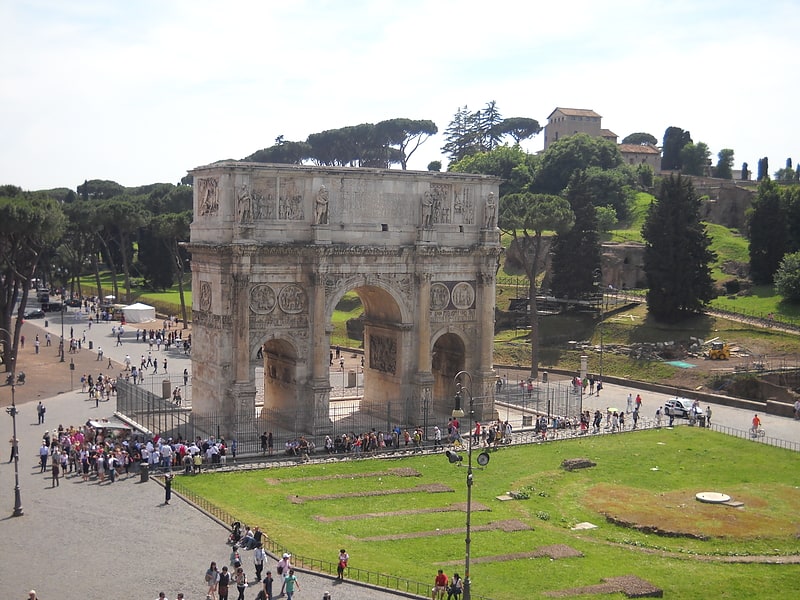
Also known as: Arco di Costantino
Grand Roman arch built in 315. The Arch of Constantine is a triumphal arch in Rome dedicated to the emperor Constantine the Great. The arch was commissioned by the Roman Senate to commemorate Constantine's victory over Maxentius at the Battle of Milvian Bridge in AD 312. Situated between the Colosseum and the Palatine Hill, the arch spans the Via Triumphalis, the route taken by victorious military leaders when they entered the city in a triumphal procession. Dedicated in 315, it is the largest Roman triumphal arch, with overall dimensions of 21 m high, 25.9 m wide and 7.4 m deep. It has three bays, the central one being 11.5 m high and 6.5 m wide and the laterals 7.4 m by 3.4 m each. The arch is constructed of brick-faced concrete covered in marble.
The three bay design with detached columns was first used for the Arch of Septimius Severus in the Roman Forum (which stands at the end of the triumph route) and repeated in several other arches now lost.
Though dedicated to Constantine, much of the sculptural decoration consists of reliefs and statues removed from earlier triumphal monuments dedicated to Trajan (98–117), Hadrian (117–138) and Marcus Aurelius (161–180).[11]
Address: Via di San Gregorio, 00186 Roma
Galleria Borghese

Renaissance art masterpiece collection. The Galleria Borghese is an art gallery in Rome, Italy, housed in the former Villa Borghese Pinciana. At the outset, the gallery building was integrated with its gardens, but nowadays the Villa Borghese gardens are considered a separate tourist attraction. The Galleria Borghese houses a substantial part of the Borghese Collection of paintings, sculpture and antiquities, begun by Cardinal Scipione Borghese, the nephew of Pope Paul V. The building was constructed by the architect Flaminio Ponzio, developing sketches by Scipione Borghese himself, who used it as a villa suburbana, a country villa at the edge of Rome.
Scipione Borghese was an early patron of Bernini and an avid collector of works by Caravaggio, who is well represented in the collection by his Boy with a Basket of Fruit, St Jerome Writing, Sick Bacchus and others. Additional paintings of note include Titian's Sacred and Profane Love, Raphael's Entombment of Christ and works by Peter Paul Rubens and Federico Barocci.[12]
Address: Piazzale Scipione Borghese, 5, 00197 Roma
Altare della Patria
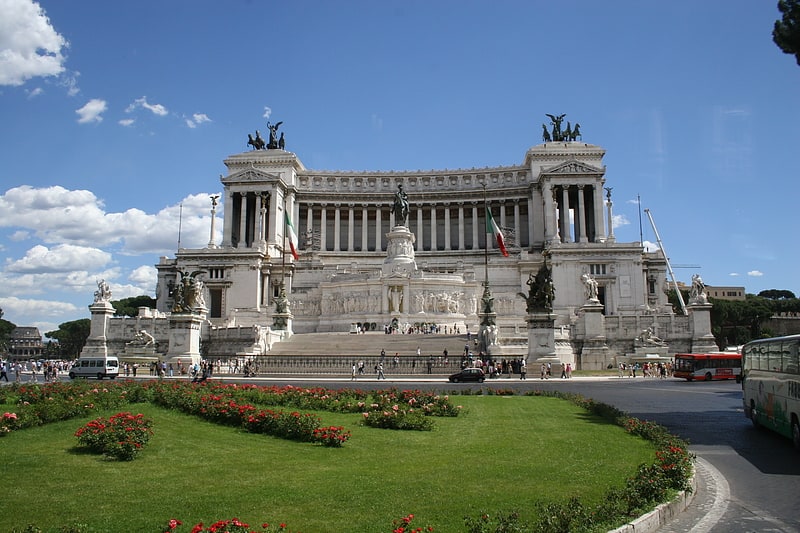
Also known as: Vittoriano
White marble memorial monument. The Victor Emmanuel II National Monument, also known as the Mole del Vittoriano or simply Vittoriano, is a large national monument built between 1885 and 1935 to honour Victor Emmanuel II, the first king of a unified Italy, in Rome, Italy. It occupies a site between the Piazza Venezia and the Capitoline Hill. It is currently managed by the Polo Museale del Lazio and is owned by the Ministry of Cultural Heritage and Activities.
From an architectural perspective, it was conceived as a modern forum, an agora on three levels connected by stairways and dominated by a portico characterized by a colonnade. The complex process of national unity and liberation from foreign domination carried out by King Victor Emmanuel II of Savoy, to whom the monument is dedicated, has a great symbolic and representative value, being architecturally and artistically centred on the Italian unification—for this reason the Vittoriano is considered one of the national symbols of Italy.
It also preserves the Altar of the Fatherland (Italian: Altare della Patria), first an altar of the goddess Rome, then also a shrine of the Italian Unknown Soldier, thus adopting the function of a lay temple consecrated to Italy. Because of its great representative value, the entire Vittoriano is often called the Altare della Patria, although the latter constitutes only a part of the monument.
Standing in the centre of ancient Rome, and connected to the modern one by the streets that radiate from Piazza Venezia, it has been consecrated to a wide symbolic value representing a lay temple metaphorically dedicated to a free and united Italy—celebrating by virtue the burial of the Unknown Soldier (the sacrifice for the homeland and for the connected ideals).[13]
Address: Rome, Piazza Venezia
Apostolic Palace

Also known as: Palazzo Apostolico
Pope's official residence in Vatican. The Apostolic Palace is the official residence of the pope, the head of the Catholic Church, located in Vatican City. It is also known as the Papal Palace, the Palace of the Vatican and the Vatican Palace. The Vatican itself refers to the building as the Palace of Sixtus V, in honor of Pope Sixtus V, who built most of the present form of the palace.
The building contains the Papal Apartments, various offices of the Catholic Church and the Holy See, private and public chapels, Vatican Museums, and the Vatican Library, including the Sistine Chapel, Raphael Rooms, and Borgia Apartment. The modern tourist can see these last and other parts of the palace, but other parts, such as the Sala Regia (Regal Room) and Cappella Paolina, had long been closed to tourists, though the Sala Regia allowed occasional tourism by 2019. The Scala Regia (Regal Staircase) can be viewed from one end and used to enter the Sala Regia. The Cappella Paolina remains closed to tourists.[14]
Address: Piazza San Pietro, 00120 Vatican City
National Roman Museum
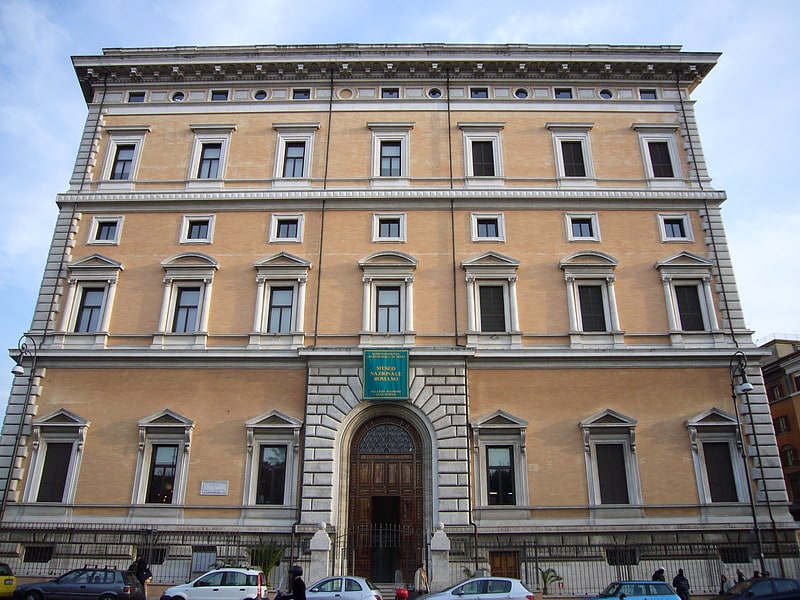
The National Roman Museum is a museum, with several branches in separate buildings throughout the city of Rome, Italy. It shows exhibits from the pre- and early history of Rome, with a focus on archaeological findings from the period of Ancient Rome.[15]
Address: Largo di Villa Peretti, 2, 00185 Roma
Sistine Chapel
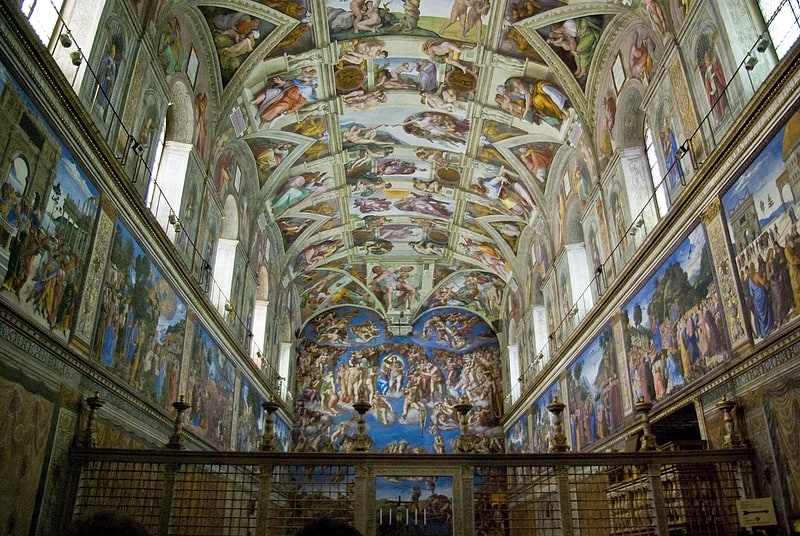
Also known as: Cappella Sistina
Michelangelo's iconic painted ceiling. The Sistine Chapel is a chapel in the Apostolic Palace, in Vatican City and the official residence of the pope. Originally known as the Cappella Magna, the chapel takes its name from Pope Sixtus IV, who had it built between 1473 and 1481. Since that time, the chapel has served as a place of both religious and functionary papal activity. Today, it is the site of the papal conclave, the process by which a new pope is selected. The fame of the Sistine Chapel lies mainly in the frescoes that decorate the interior, most particularly the Sistine Chapel ceiling and The Last Judgment, both by Michelangelo.
During the reign of Sixtus IV, a team of Renaissance painters that included Sandro Botticelli, Pietro Perugino, Pinturicchio, Domenico Ghirlandaio and Cosimo Rosselli, created a series of frescos depicting the Life of Moses and the Life of Christ, offset by papal portraits above and trompe-l'œil drapery below. These paintings were completed in 1482, and on 15 August 1483 Sixtus IV celebrated the first mass in the Sistine Chapel for the Feast of the Assumption, at which ceremony the chapel was consecrated and dedicated to the Virgin Mary.
Between 1508 and 1512, under the patronage of Pope Julius II, Michelangelo painted the chapel's ceiling, a project which changed the course of Western art and is regarded as one of the major artistic accomplishments of human civilization. In a different political climate, after the Sack of Rome, he returned and, between 1535 and 1541, painted The Last Judgment for Popes Clement VII and Paul III. The fame of Michelangelo's paintings has drawn multitudes of visitors to the chapel ever since they were revealed five hundred years ago.[16]
Address: Citta del Vaticano 1, 00120 Vatican City
Ostia Antica
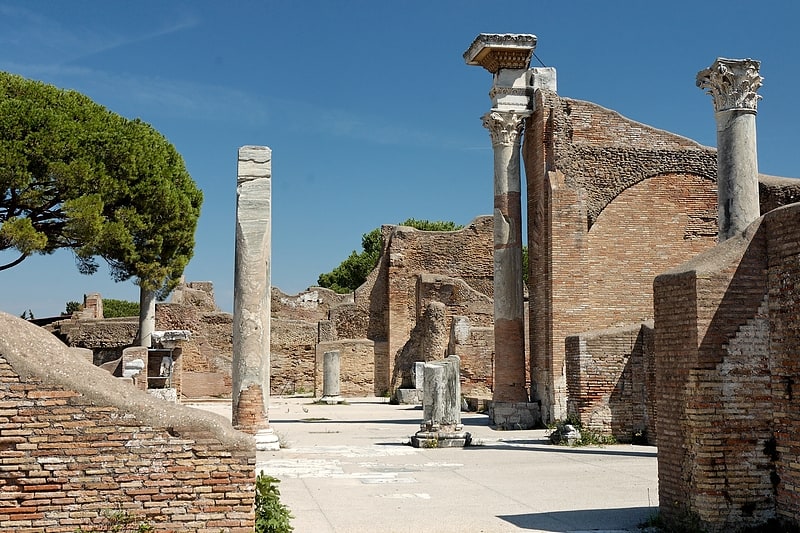
Also known as: Ostia
Remains of an ancient Roman city. Ostia Antica is a large archaeological site, close to the modern town of Ostia, that is the location of the harbour city of ancient Rome, 15 miles southwest of Rome. "Ostia" is a derivation of "os", the Latin word for "mouth". At the mouth of the River Tiber, Ostia was Rome's seaport, but due to silting the site now lies 3 kilometres from the sea. The site is noted for the excellent preservation of its ancient buildings, magnificent frescoes and impressive mosaics.[17]
Address: Viale dei Romagnoli, 717, 00119 Roma
Mamertine Prison
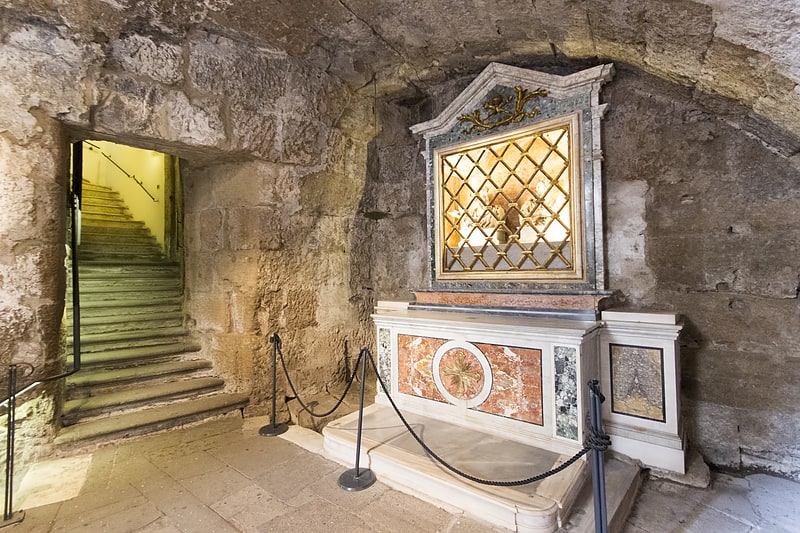
Also known as: Carcere Mamertino
Archaeological museum in Rome, Italy. The Mamertine Prison, in antiquity the Tullianum, was a prison with a dungeon located in the Comitium in ancient Rome. It is said to have been built in the 7th century BC and was situated on the northeastern slope of the Capitoline Hill, facing the Curia and the imperial fora of Nerva, Vespasian, and Augustus. Located between it and the Tabularium was a flight of stairs leading to the Arx of the Capitoline known as the Gemonian stairs.
The church of San Giuseppe dei Falegnami now stands above the Mamertine.[18]
Address: Clivo Argentario, 1, 00186 Roma
Castel Sant'Angelo
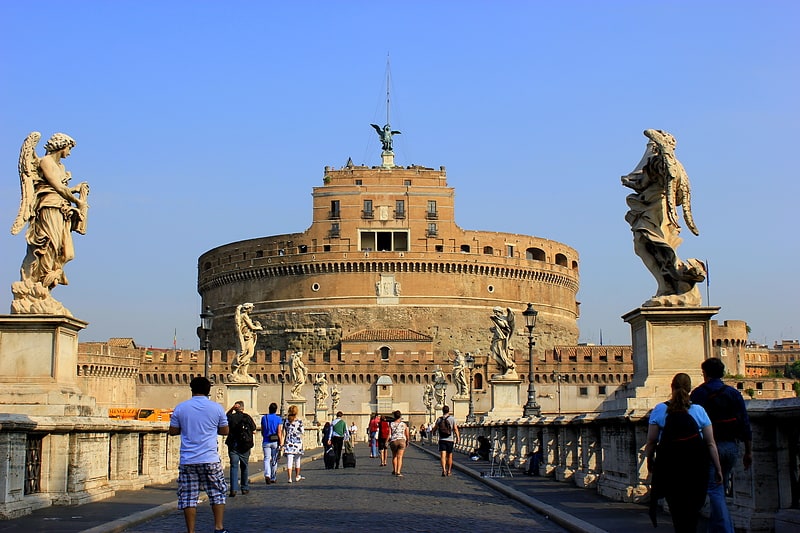
2nd-century cylindrical castle and museum. The Mausoleum of Hadrian, usually known as Castel Sant'Angelo, is a towering cylindrical building in Parco Adriano, Rome, Italy. It was initially commissioned by the Roman Emperor Hadrian as a mausoleum for himself and his family. The building was later used by the popes as a fortress and castle, and is now a museum. The structure was once the tallest building in Rome.[19]
Address: Lungotevere Castello, 50, 00193 Roma
Vatican Necropolis
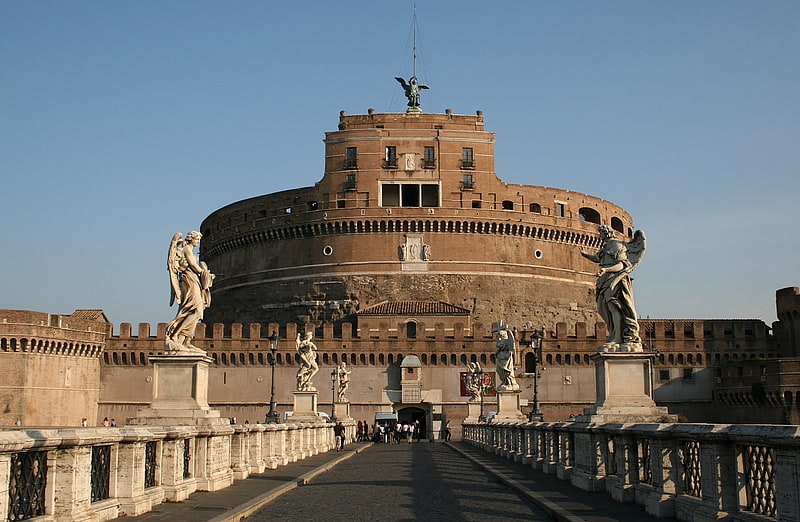
Also known as: Necropoli vaticana
Necropolis. The Vatican Necropolis lies under the Vatican City, at depths varying between 5–12 metres below Saint Peter's Basilica. The Vatican sponsored archaeological excavations under Saint Peter's in the years 1940–1949 which revealed parts of a necropolis dating to Imperial times. The work was undertaken at the request of Pope Pius XI who wished to be buried as close as possible to Peter the Apostle. It is also home to the Tomb of the Julii, which has been dated to the third or fourth century. The necropolis was not originally one of the Catacombs of Rome, but an open air cemetery with tombs and mausolea.
The Vatican Necropolis is not to be confused with the Vatican grottoes, the latter of which resulted from the construction of St. Peter's Church and is located on the ground level of the old Constantinian basilica.[20]
Domus Augustana
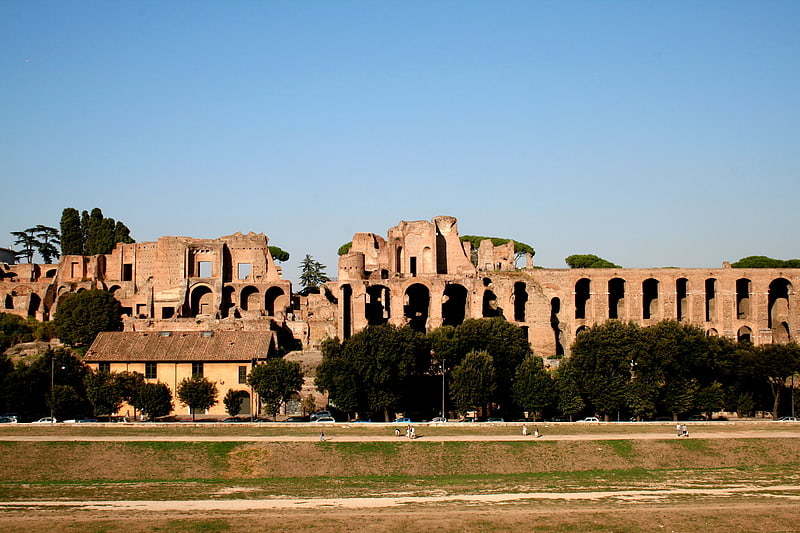
Historical landmark in Rome, Italy. The Domus Augustana is the modern name given to the central residential part of the vast Roman Palace of Domitian on the Palatine Hill. In antiquity the name may have applied to the whole of the palace.
Its name is not directly related to the emperor Augustus (r. 27 BC – AD 14) and should not be confused with the nearby Domus Augusti, but probably refers to the later Roman meaning of Augustus as "emperor".[21]
Ponte Sant'Angelo

Ancient bridge built by Emperor Hadrian. Ponte Sant'Angelo, originally the Aelian Bridge or Pons Aelius, is a Roman bridge in Rome, Italy, completed in 134 AD by Roman Emperor Hadrian, to span the Tiber from the city centre to his newly constructed mausoleum, now the towering Castel Sant'Angelo. The bridge is faced with travertine marble and spans the Tiber with five arches, three of which are Roman; it was approached by means of a ramp from the river. The bridge is now solely pedestrian and provides a scenic view of Castel Sant'Angelo. It links the rioni of Ponte, and Borgo, to whom the bridge administratively belongs.[22]
Address: Ponte Sant'Angelo, 00186 Roma
Terme di Caracalla
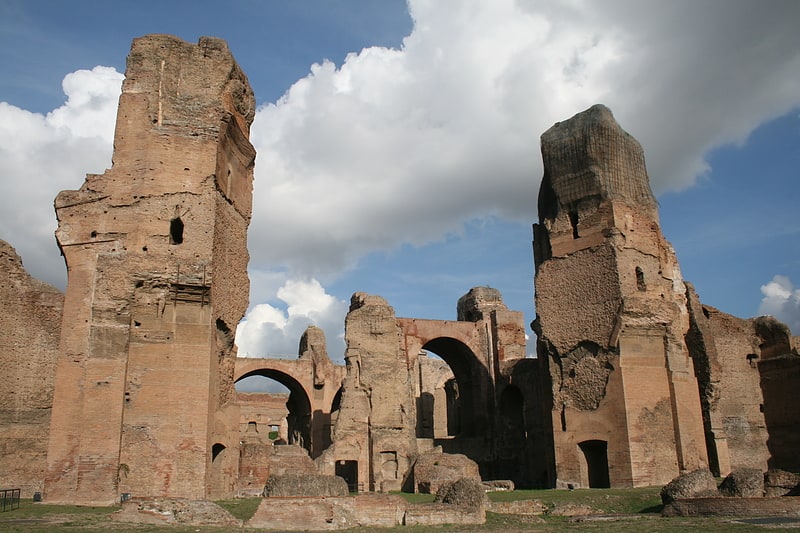
Ruins of a vast Roman bath complex. The Baths of Caracalla in Rome, Italy, were the city's second largest Roman public baths, or thermae. The baths were likely built between AD 212 and 216/217, during the reigns of emperors Septimius Severus and Caracalla. They were in operation until the 530s and then fell into disuse and ruin.
Both during and since their operation as baths, they served as inspiration for many other notable buildings, ancient and modern, such as the Baths of Diocletian, the Basilica of Maxentius, the original Pennsylvania Station in New York City, Chicago Union Station and the Senate of Canada Building. Artworks recovered from the ruins include famous sculptures such as the Farnese Bull and the Farnese Hercules.
Today the Baths of Caracalla are a tourist attraction.[23]
Address: Viale delle Terme di Caracalla, 00153 Roma
Via Veneto
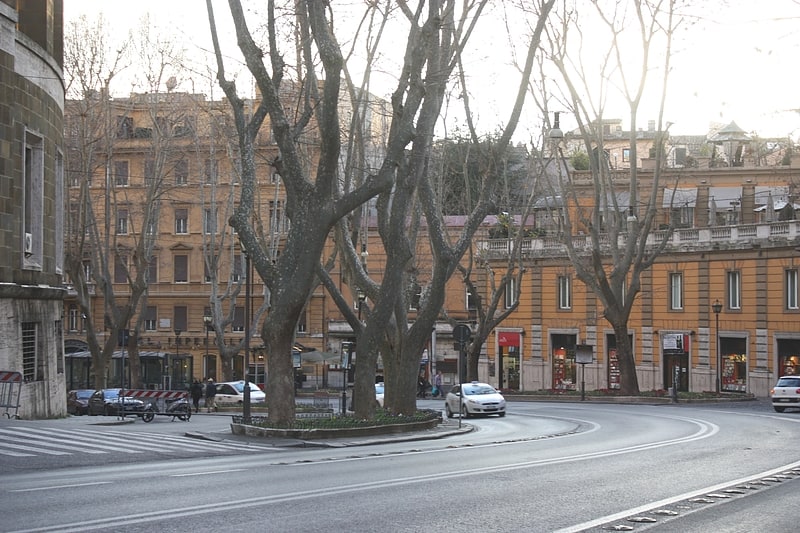
Also known as: Via Vittorio Veneto
Street in Rome, Italy. Via Vittorio Veneto, colloquially called Via Veneto, is one of the most famous, elegant, and expensive streets of Rome, Italy. The street is named after the Battle of Vittorio Veneto, a decisive Italian victory of World War I. Federico Fellini's classic 1960 film La Dolce Vita was mostly centered on the Via Veneto area.[24]
Address: Via Vittorio Veneto, 173, 00187 Roma
Pincio
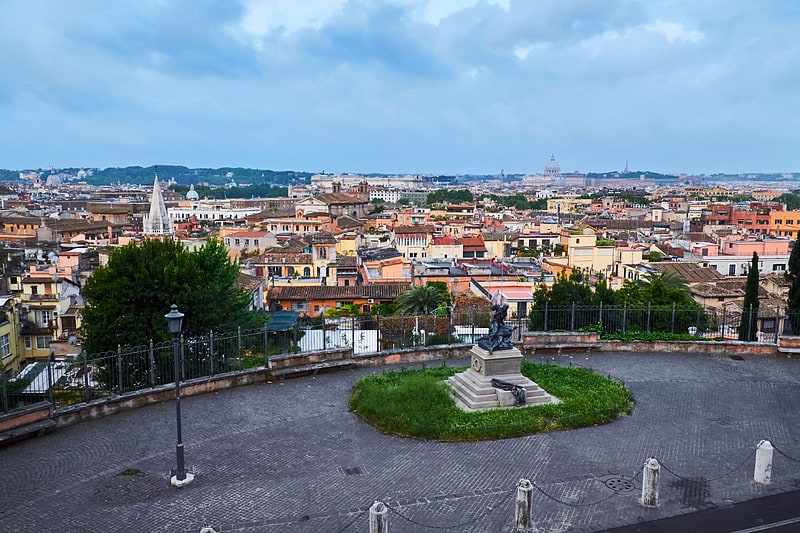
Statues and gardens in scenic surrounds. The Pincian Hill is a hill in the northeast quadrant of the historical centre of Rome. The hill lies to the north of the Quirinal, overlooking the Campus Martius. It was outside the original boundaries of the ancient city of Rome, and was not one of the Seven hills of Rome, but it lies within the wall built by Roman Emperor Aurelian between 270 and 273.[25]
Address: Viale Gabriele D'Annunzio, 00187 Roma
Circus Maximus
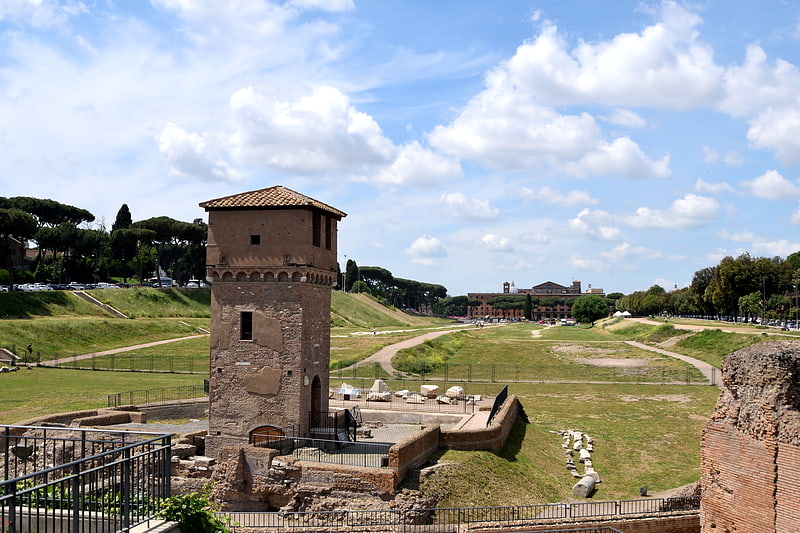
Also known as: Circo Massimo
Stone arena for vast Roman assemblies. The Circus Maximus is an ancient Roman chariot-racing stadium and mass entertainment venue in Rome, Italy. In the valley between the Aventine and Palatine hills, it was the first and largest stadium in ancient Rome and its later Empire. It measured 621 m in length and 118 m in width and could accommodate over 150,000 spectators. In its fully developed form, it became the model for circuses throughout the Roman Empire. The site is now a public park.[26]
Address: Via del Circo Massimo, 00186 Roma
Fountains of St. Peter's Square

The Fountains of St. Peter's Square are two fountains in St. Peter's Square in Vatican City, created by Carlo Maderno and Gian Lorenzo Bernini to ornament the square in front of St. Peter's Basilica. The older fountain, by Maderno, is on the north side of the square.[27]
Trajan's Column

Also known as: Colonna Traiana
Roman triumphal column and public platform. Trajan's Column is a Roman triumphal column in Rome, Italy, that commemorates Roman emperor Trajan's victory in the Dacian Wars. It was probably constructed under the supervision of the architect Apollodorus of Damascus at the order of the Roman Senate. It is located in Trajan's Forum, north of the Roman Forum. Completed in AD 113, the freestanding column is most famous for its spiral bas relief, which depicts the wars between the Romans and Dacians. Its design has inspired numerous victory columns, both ancient and modern.
The structure is about 30 metres (98 feet) in height, 35 metres (115 feet) including its large pedestal. The shaft is made from a series of 20 colossal Carrara marble drums, each weighing about 32 tons, with a diameter of 3.7 metres (12.1 feet). The 190-metre (620-foot) frieze winds around the shaft 23 times. Inside the shaft, a spiral staircase of 185 steps provides access to a viewing deck at the top. The capital block of Trajan's Column weighs 53.3 tons, and had to be lifted to a height of about 34 metres (112 feet).
Ancient coins indicate preliminary plans to top the column with a statue of a bird, probably an eagle. After construction, a statue of Trajan was put in place; this disappeared in the Middle Ages. On December 4, 1587, the top was crowned with a bronze figure of Saint Peter the Apostle by Pope Sixtus V, which remains to this day.
Trajan's Column was originally flanked by two sections of the Ulpian Library, a Greek chamber and a Latin chamber, which faced each other and had walls lined with niches and wooden bookcases for scrolls. The Latin chamber likely contained Trajan's commentary on the Roman-Dacian Wars, the Dacica, which most scholars agree was intended to be echoed in the spiralling, sculpted narrative design of Trajan's Column.[28]
Address: Via dei Fori Imperiali, 00187 Roma
Santa Maria sopra Minerva
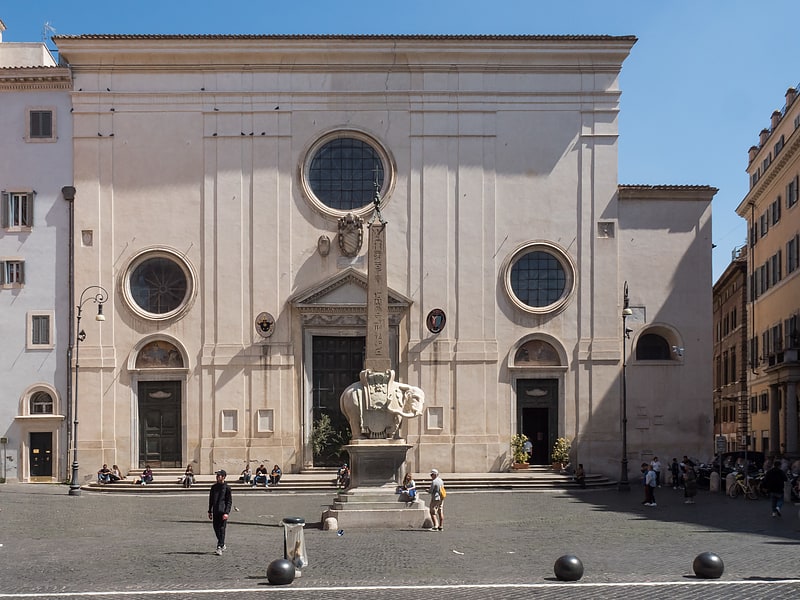
Ornate and lavish Gothic-style church. Santa Maria sopra Minerva is one of the major churches of the Roman Catholic Order of Preachers in Rome, Italy. The church's name derives from the fact that the first Christian church structure on the site was built directly over the ruins or foundations of a temple dedicated to the Egyptian goddess Isis, which had been erroneously ascribed to the Greco-Roman goddess Minerva.
The church is located in Piazza della Minerva one block behind the Pantheon in the Pigna rione of Rome within the ancient district known as the Campus Martius. The present church and disposition of surrounding structures is visible in a detail from the Nolli Map of 1748.
While many other medieval churches in Rome have been given Baroque makeovers that cover Gothic structures, the Minerva is the only extant example of original Gothic architecture church building in Rome. Behind a restrained Renaissance style façade the Gothic interior features arched vaulting that was painted blue with gilded stars and trimmed with brilliant red ribbing in a 19th-century Neo-Gothic restoration.
The church and adjoining convent served at various times throughout its history as the Dominican Order's headquarters. Today the headquarters have been re-established in their original location at the Roman convent of Santa Sabina. The titulus of Sanctae Mariae supra Minervam was conferred on 28 June 2018 to Cardinal António Marto.[29]
Address: Piazza della Minerva, 00186 Rome
Piazza Navona
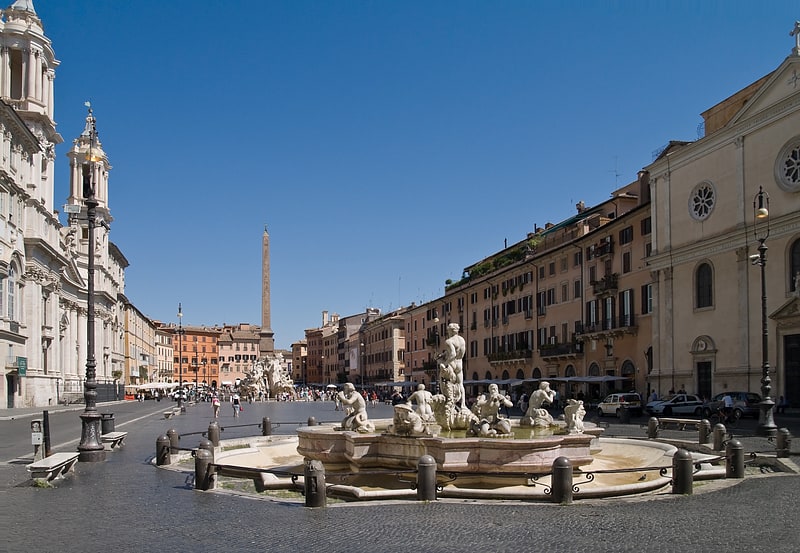
Elegant square with a fountain and bars. Piazza Navona is a public open space in Rome, Italy. It is built on the site of the Stadium of Domitian, built in the 1st century AD, and follows the form of the open space of the stadium. The ancient Romans went there to watch the agones, and hence it was known as "Circus Agonalis". It is believed that over time the name changed to in avone to navone and eventually to navona.[30]
Address: Piazza Navona, 00186 Roma
Via Condotti
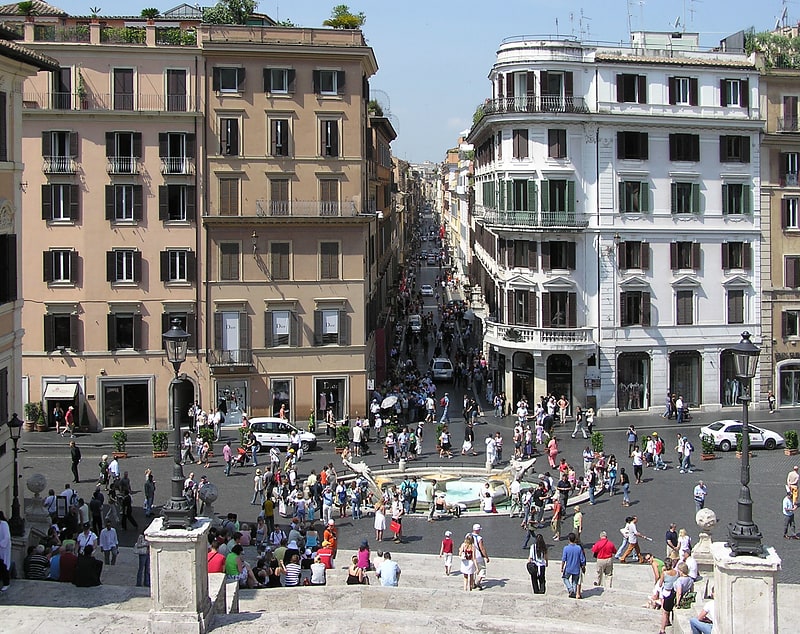
Also known as: Via dei Condotti
Street in Rome, Italy. Via dei Condotti is a busy and fashionable street of Rome, Italy. In Roman times it was one of the streets that crossed the ancient Via Flaminia and enabled people who transversed the Tiber to reach the Pincio hill. It begins at the foot of the Spanish steps and is named after conduits or channels which carried water to the Baths of Agrippa. Today, it is the street which contains the greatest number of Rome-based Italian fashion retailers, equivalent to Milan's Via Montenapoleone, Paris' Rue du Faubourg-Saint-Honoré, Florence's Via de' Tornabuoni or London's Bond Street.
Caffé Greco (or Antico Caffé Greco), perhaps the most famous café in Rome was established at Via dei Condotti 86 in 1760, and attracted figures such as Stendhal, Goethe, Byron, Liszt and Keats to have coffee there. Guglielmo Marconi, inventor of radio, lived at Via dei Condotti 11, until his death in 1937.
Being near the Spanish steps, the street is visited by large numbers of tourists. In May 1986, fashion designer Valentino filed suit to close a McDonald's shortly after it opened near the Spanish steps, complaining of "noise and disgusting odours" below his six-story palazzo in the vicinity of Via Condotti. But to the dismay of some Romans, McDonald's overcame the obstacles and is successful.
Via Condotti is a center of fashion shopping in Rome. Dior, Gucci, Valentino, Hermès, Armani, Jimmy Choo, La Perla, Prada, Salvatore Ferragamo, Furla, Burberry, Céline, Dolce & Gabbana, Max Mara, Alberta Ferretti, Trussardi, Buccellati, Bulgari, Damiani, Tod's, Zegna, Cartier, Bally, Montblanc, Tiffany & Co. Louis Vuitton have stores on Via Condotti. Others, such as Laura Biagiotti, have their offices there.[31]
Address: Via dei Condotti, 00187 Roma
Trajan's Market

Also known as: Mercati di Traiano
Restored Roman city forum complex. Trajan's Market is a large complex of ruins in the city of Rome, Italy, located on the Via dei Fori Imperiali, at the opposite end to the Colosseum. The surviving buildings and structures, built as an integral part of Trajan's Forum and nestled against the excavated flank of the Quirinal Hill, present a living model of life in the Roman capital and a glimpse at the restoration in the city, which reveals new treasures and insights about ancient Roman architecture.
Thought to be the world's oldest shopping mall, the arcades in Trajan's Market are now believed by many to be administrative offices for Emperor Trajan. The shops and apartments were built in a multi-level structure and it is still possible to visit several of the levels. Highlights include delicate marble floors and the remains of a library.[32]
Address: Via Quattro Novembre, 94, 00187 Roma
Tabularium
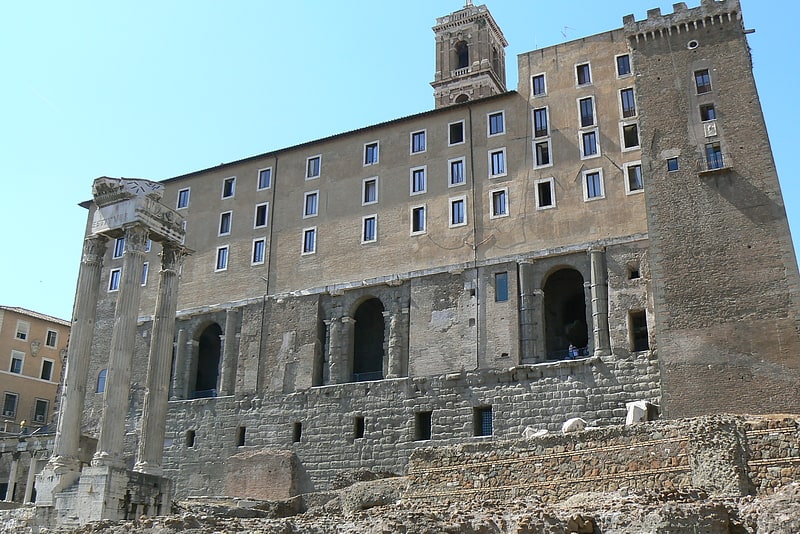
Historical place in Rome, Italy. The Tabularium was the official records office of ancient Rome and housed the offices of many city officials. Situated within the Roman Forum, it was on the front slope of the Capitoline Hill, below the Temple of Jupiter Optimus Maximus, to the southeast of the Arx and Tarpeian Rock.
Within the building were the remains of the temple of Veiovis. In front of it were the Temples of Vespasian and Concord, as well as the Rostra and the rest of the forum. Presently the Tabularium is only accessible from within the Capitoline Museum, although it still provides a panoramic view over the Forum.
The construction of the Tabularium was ordered around 78 BC by the dictator Lucius Cornelius Sulla. The building was completed by Quintus Lutatius Catulus, consul in 78 BC. This was part of a public works programme for the redevelopment of the Capitoline Hill, which had been damaged by a fire in 83 BC. The construction by Catulus is not mentioned in the ancient literature. It is known through an inscription (CIL 1).[33]
Address: Via di S. Pietro in Carcere, 00186 Roma
Palazzo Doria Pamphilj
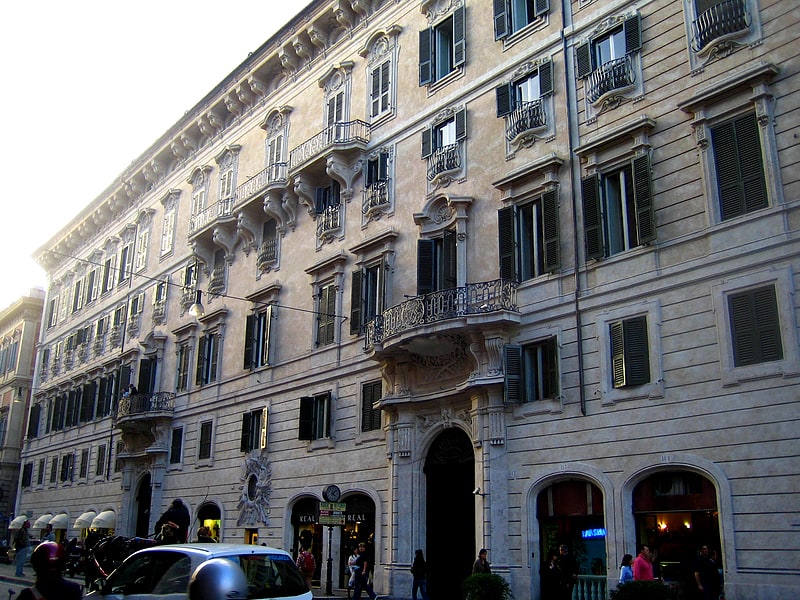
Also known as: Galleria Doria Pamphilj
Tours of opulent 18th-century apartments. The Doria Pamphilj Gallery is a large art collection housed in the Palazzo Doria Pamphilj in Rome, Italy, between Via del Corso and Via della Gatta. The principal entrance is on the Via del Corso. The palace façade on Via del Corso is adjacent to a church, Santa Maria in Via Lata. Like the palace, it is still privately owned by the princely Roman family Doria Pamphili. Tours of the state rooms often culminate in concerts of Baroque and Renaissance music, paying tribute to the setting and the masterpieces it contains.[34]
Address: Via del Corso, 305, 00186 Roma
Trevi Fountain
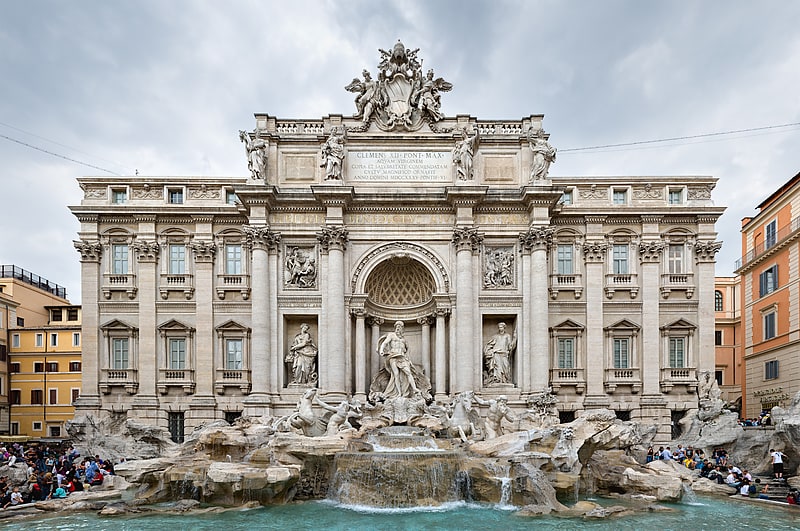
Also known as: Fontana di Trevi
Iconic 18th-century sculpted fountain. The Trevi Fountain is an 18th-century fountain in the Trevi district in Rome, Italy, designed by Italian architect Nicola Salvi and completed by Giuseppe Pannini and several others. Standing 26.3 metres high and 49.15 metres wide, it is the largest Baroque fountain in the city and one of the most famous fountains in the world.
The fountain has appeared in several films, including Roman Holiday (1953), the eponymous Three Coins in the Fountain (1954), Federico Fellini's classic La Dolce Vita (1960), Sabrina Goes to Rome (1998), and The Lizzie McGuire Movie (2003).[35]
Address: Piazza di Trevi, 00187 Roma